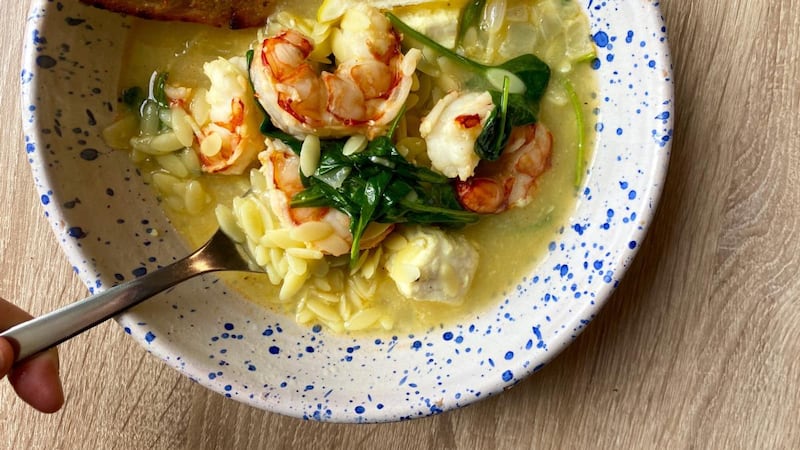Do you consciously avoid standing near a microwave oven in case some of its energy leaks out, or wait a moment before putting your hand in to retrieve something you’ve just nuked? You’re probably not alone, but the good news is your fears are misplaced.
"Microwave ovens are extremely safe. They are tested to release no more than 1/100th of the energy transmitted by your cell phone. If you are worried about microwave 'radiation', give up your mobile first," says Prof Greg Blonder, professor of design and product engineering at Boston University.
So they are safe, but are they any good, and what can you do with them other than reheat leftovers?
There's a bit of elitism when it comes to having microwaves in a commercial kitchen. It's easy to be judged by that ping
David Chang, a chef and founder of the Momofuku restaurant group in the United States, has become an unlikely poster boy for the kitchen gadget that many culinary professionals love to hate. He has described the appliance, which has been in widespread domestic use since the 1970s, as offering "faster, safer, more delicious cooking".
His social-media accounts have recently featured a series of videos in which he cooks a range of foods, from chicken thighs and salmon fillets to rice and mashed potato, in a microwave in his home kitchen. There has been a mixed reaction. Rice good, frozen salmon not so great, at least according to responses from his 1.7 million Instagram followers.
Chang's endorsement bestows respectability on a device that can polarise opinion. The chef and Irish Times food columnist Paul Flynn is also an enthusiast.
“I can’t imagine my home kitchen without a microwave; it’s the first thing that’s used in the morning, when I heat up the milk for my coffee. It makes life easier, for heating up leftovers, or for giving the family a healthy green veg fix. I put a bag of tenderstem broccoli or French beans in the microwave for two to three minutes and they steam very happily,” he says.
Prof Blonder would approve. “Foods cooked in a microwave are highly nutritious. Conversely, boiling or simmering can wash vitamins and minerals out into the liquid. And, since cooking times are reduced, generally food molecules and nutrients are better preserved,” he tells The Irish Times.
Concerns about altered or reduced nutrient values in microwaved food have been debunked in research
Flynn also has a microwave in his restaurant, The Tannery, in Dungarvan. “It’s used to reheat steamed puddings in winter, or for melting chocolate. There’s a bit of elitism, I feel, when it comes to having microwaves in a commercial kitchen. It’s easy to be judged by that ping. Eyebrows are raised, but I don’t care: I wouldn’t be without one.”
Chang has spent the pandemic cooking at home for his wife and their baby son rather than immersed in the restaurant world, and the microwave has become his new best friend. Last month he launched a range of microwave-safe dishes, the Anyday collection, in a collaboration with the Meyer Corporation, which may account for his recent evangelism. He also devoted an episode of his podcast to "Debunking Microwave Myths", in which Prof Blonder addresses common misconceptions.
The scientist confirms that microwave ovens are safe and effective, but is there anything Prof Blonder wouldn’t put in his?
“Most cling films will not break down into toxic chemicals, nor do they contain dangerous additives like plasticisers. But some plastic take-away containers and storage bins may. So I generally reheat and store my food in microwave-approved glass or ceramic containers,” he says.
I almost couldn't believe what was coming out of the microwave each time I heard the timer ding
Concerns about altered or reduced nutrient values in microwaved food have been debunked in research by scientific and academic institutions, including Harvard and Cornell universities. But back in the 1970s and 1980s, when the appliance became mainstream for domestic use, manufacturers relied on person-to-person marketing to reassure new users about the efficacy and safety of the magical new machine.
"I started working for Philips in about 1989. I was one of nine microwave demonstrators they took on to work both in store and also in large venues, demonstrating and selling microwaves," says Beverley Jarvis, a home economist and author of more than 20 cookbooks, including Microwave Cooking, one of the first of its kind in the UK, published in 1984.
Jarvis went on to write five further books about cooking with a microwave oven, and her next book, Eat Well to Age Well, due to be published later this year, also contains a chapter on its uses.
Cooks also source microwave recipe inspiration online. Chloe Harris, an Irish recipe developer currently living in Zurich, only recently discovered the potential of the microwave as a food prep appliance.
“I was a microwave sceptic for years,” she says, using it just to reheat food. But then she was hired to write recipes specifically for the appliance, for the recipe app Drop.


“I was creating delicious, nutritious meals in under 15 minutes, with everything being cooked in the microwave. I created recipes like quick salmon miso ramen, smokey pancetta pasta, vegan curries, apple crumble, orzo and prawn stew, tomato and mozzarella meatballs.
"The fish was perfectly moist, the crumble just as good as from the oven, but in less than half of the time. I almost couldn't believe what was coming out of the microwave each time I heard the timer ding," Harris says. You can find her microwave recipes on her website and on the Drop app.
In practice, though, many of us use our microwaves for little more than heating ready meals, making porridge and popcorn, reheating tea and coffee that has gone cold, and warming dinner plates. But the appliance is capable of much more, as these suggestions from users reveal.
10 things you can do in your microwave
1 Pop citrus fruit in for 15-20 seconds and then squeeze it. This makes it much easier to juice and you get more juice too. – Maria Noonan
2 Slightly defrost small pots of home-made chicken or beef stock, to easily lift off the layer of fat on top. – Dr John D Mulcahy
3 Place a vanilla pod into the microwave for about 15 seconds before use. The flavour is intensified, it's much easier to scrape out the seeds and when you place the pod into sugar for vanilla sugar, it's a better flavour. – Aidan McGee
4 Steam brioche burger buns or hotdog buns, wrapped in damp paper towel, by zapping them on high for two minutes. – Rebecca Flynn
5 Cook rice: 1 mug of basmati rice to 2 mugs of boiling water in a large glass bowl with a good big pinch of salt and a couple of cubes of butter. Cook on full power for 10 minutes. Stir and then back on for another two minutes, depending on the size of the mug, then let it sit and steam in the microwave. – Sarah Breslin
6 Use it to par-cook potatoes before baking them, if short on time. – Kate Bielinski
7 They are great for peeling chestnuts easily. A cross scored in the bottom, a little water and they open up. – Anne Dolamore
8 Plate of whole, skin-on almonds, drizzle of water, pinch of salt and chilli flakes, microwave for four minutes, let cool (if you can) ... snack sorted. – Michael Walsh
9 Put raw fish for a chowder on a plate, drizzle of white wine, tiny splash of water, wrap really well with cling film, microwave 90 seconds. It just sets the fish and retains the integrity of each piece. – JP Vesey
10 To clean a microwave, cut a lemon in half and put it in a saucer of water and put it on full power for three minutes; leaves it sparkling. – Claire Ronan
















